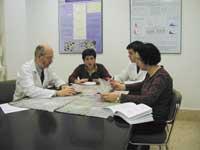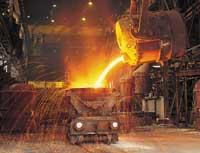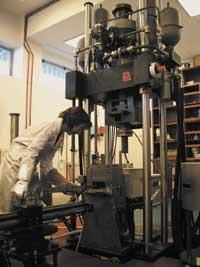Niobio awards the prize to the CEIT research centre

The London Institute of Materials annually awards prizes among research groups on materials. This year, one of the awards has been awarded to a group of researchers from the CEIT research centre in Donostia and the University of Navarra for having carried out a major research in the steel sector. They have been awarded the Charles Hatchett Prize, created 25 years ago to promote research on niobium.
Steel to increase its strength is usually mixed with other metals. They are added, among others, metals of titanium, niobium, vanadium or molybdenum, always in very small quantities. These mixtures or alloys are sufficient to obtain better quality steel. This allows to create lighter structures without losing solidity. In construction and the car, for example, this type of steel is used. These alloys allow to employ increasingly narrow beams in the construction and plates of steel of less weight in the automotive. This lightness considerably reduces the consumption of vehicles.
The CEIT research team is also investigating to increase steel resistance. The group is formed by Jose Mari Rodriguez Ibabe, Beatriz López, Peio Uranga and Ana Fernández, who work with the niobium. José Mari said that “we work mainly in the steel sector. Niobium is used to improve the mechanical properties of steels, as well as vanadium and titanium. But each metal has its field, its use. We studied microalloyed steels with niobium. The amount of niobium added to steel is very small, so we call microalloy. However, it has a great influence. The 0.03-0.04% niobium is sufficient to double the resistance of steel.”
However, the new materials have forced the steel industry to evolve rapidly, and as new forms of processing of niobium steel are developing, so far, problems have been found that no one had identified. That is why they have received the award. “When using niobium new problems arise and we have been the first to realize that the problems were there and that perhaps the behavior of steel was not so adequate. Once the problem was identified, we were able to see what the causes were and, therefore, we proposed new ways.”
In the opinion of this group of researchers, the problem is that by increasing niobium, steel sometimes loses its homogeneity. In some cases, niobium causes heterogeneity in the microstructure of steel. That is, a difference in size was observed between the crystals or microparticles that make up the steel in different zones, which generates weak or fragile points. This allows to generate defective steel.

Therefore, the CEIT researchers have studied all the variables of the steel processing process and found the right conditions to correct the error. According to José Mari, “the solution is to take into account some variables in the processing of steel. The adaptation of the temperature and other variables, for example, practically disappears. With our research we have opened, in part, new ways to develop new alloy designs.”
However, the same result is not new. “The result of the project was presented two years ago in an American congress. It is the first time that we demonstrated at the production level that when the process changes, niobium generates new problems. In that congress the problem was put on the table. The problem is analyzed and its origin is indicated. Somehow we were able to say what ways we had to look for to face the problem. But at that time it didn’t have too much repercussion,” so the CEIT has been surprised to have received the Charles Hatchett prize.
“Then we learned that in some workshops this problem has already begun to emerge and not only in Europe. That is, what we saw in the laboratory, but on a practical level. In this way, the problem we posed was suddenly put on the table and we had already given the solution. We believe that from there comes the prize.”

However, the prize received for this work is not the first that the team has received from the London Institute of Materials. Two years ago, the same organization rewarded the work done with another metal, the vanadium, which increases the resistance of steel.
In this period, the cultivation or processing of steel with vanadium at temperatures below the usual ones was studied. In this way, pieces of greater precision are obtained, since the higher the temperature, the more the size of the pieces of steel changes.
Obtaining both awards is very important. José Mari considers that “there is great competition between niobium and the two industries located behind vanadium. There are incredible economic interests. Around the niobium there is practically monopoly in the exploitation, in the supply. The most important mines are in Brazil, with 80% of world production. Vanadium is in South Africa. There is a lot of competition between them, and upon receiving both awards we have seen that we are independent.”
The prize will be presented on June 10 at an event that will take place in London. However, Beatriz López has acknowledged that “receiving this second prize gives us a vertigo, she feels very worried. Those who had so far received this award were for us teachers, we took them as an example. The fact of being present in this list of winners is a great concern and a great challenge for the future”, is the first research team in the world that has achieved this award. This has made them benchmark in the steel sector.





